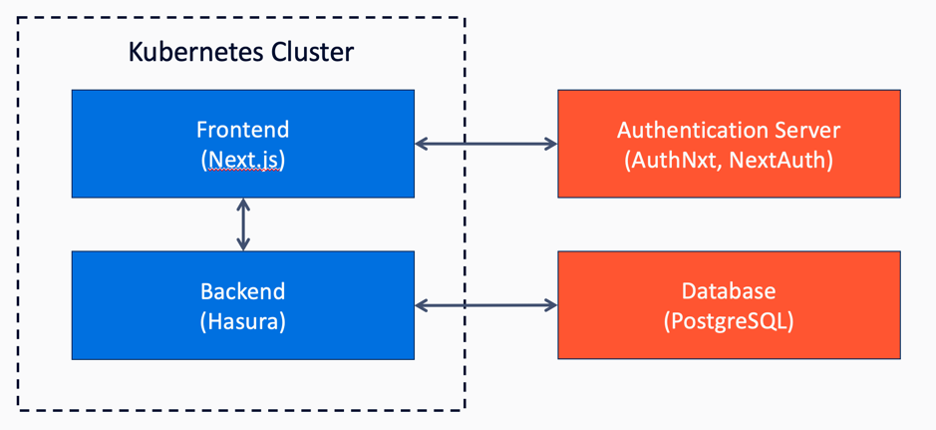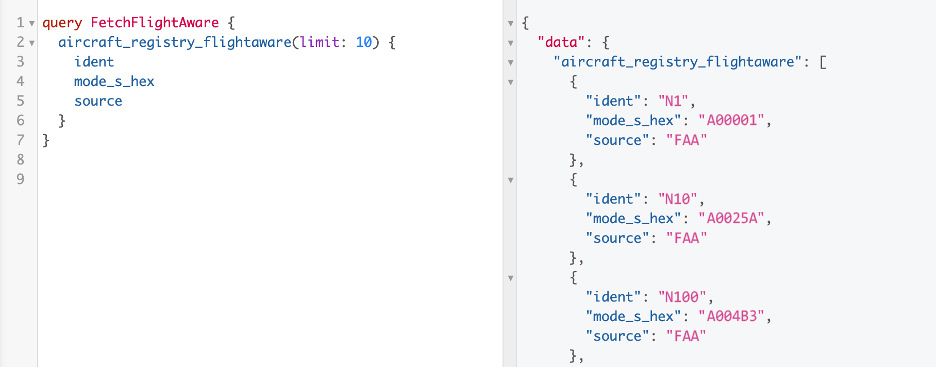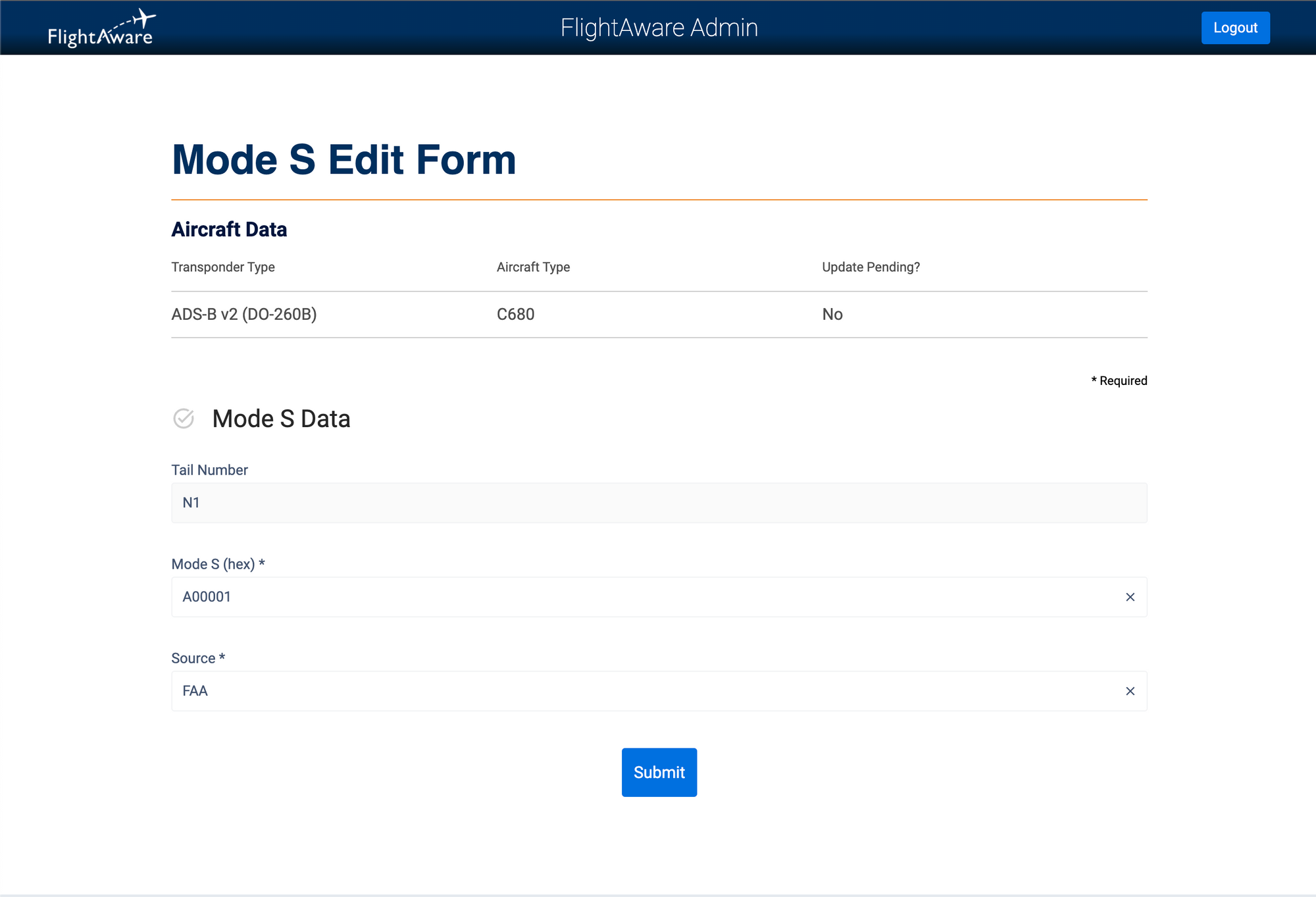Chadd Mikulin is the Vice President of Engineering at FlightAware. For over fifteen years, he has helped grow and promote leaders in the organizations of which he’s been part.
Every year, our interns spend the summer working on interesting and meaningful projects that help them learn how to work on a professional team and help us solve problems across our business. Jared's project was no exception. As we transition to a new set of technologies to deliver our web products, we needed to create a platform on which all of our behind-the-scenes administrative pages could live. Jared took on the task with aplomb, creating that framework and building its first tool, a new way for us to manage hex code mappings. We were excited to have him, and all our other interns, and hope you enjoy this final post in our series.

Jared Harvey
Hello! My name is Jared Harvey. This fall, I’ll be entering my final semester in Carnegie Mellon’s Master of Software Engineering program. After my graduation in December, I’m hoping to pursue a career in full-stack web development or as a backend engineer. Outside of work, I love to practice photography, spend time with friends, and play (a frankly unhealthy amount of) Dungeons & Dragons.
This summer, I’ve had the opportunity to work with FlightAware’s Web team, where I’ve been responsible for leading an effort to create a new admin dashboard for FlightAware employees, which will be expanded upon and eventually replace the existing legacy version. This project is part of the Web team’s WebNxt initiative, which aims to completely replace the existing website architecture with modern languages, tools, and technologies packaged as independent microservices.
It's been an honor to work on this project alongside the rest of FlightAware’s engineers, who have all been incredibly welcoming and open to collaboration when I ask for help. From my manager and mentor to company leadership, I’ve had the privilege of working with engineers across the company to build my project from the ground up.
My Project
Fa_web is the legacy codebase for FlightAware’s website; it’s a type of architecture known as a monolith which, as the name implies, contains virtually everything to do with the current website. To move away from this legacy monolith, the Web team introduced the WebNxt initiative. WebNxt is a methodology for designing microservices—independent applications which serve a small set of features—using modern languages and design principles. Some key benefits of this approach are that applications are easier to build, projects can get to production more quickly, and newly hired engineers (like me!) are more familiar with the tooling.
The existing admin dashboard exists on the fa_web monolith and consists of over 100 different links to the various tools that FlightAware employees use to manage the company’s data. Like other WebNxt projects, we want to separate this dashboard into its own microservice. Fortunately, I haven’t been tasked with porting over 100 different pages of tools; rather, my job this summer is to create the skeleton for a new admin dashboard which FlightAware can expand upon over time.
Since my project is a brand-new application, a large part of my project was deciding how to construct it and deploying it so that it’s accessible to FlightAware employees. Fortunately, the architecture is simple. I am responsible for the frontend and backend; the frontend is a Next.js application, which is a popular framework choice for JavaScript-based applications and the choice framework for the WebNxt initiative at FlightAware. For the backend, we decided to use an open-source application called Hasura. These two services would interact with other FlightAware infrastructure, such as our new authentication server and FlightAware’s database.

Hasura was a new technology for me when I started this project, as it was picked by the web team specifically for this project. It’s a third-party application meant to replace a typical backend service. It works by “tracking” tables in a database: Hasura reads the schema in our database then automatically generates a fully featured GraphQL API. This API allows developers to easily query for data or make database updates in a familiar, JSON-like language. Hasura also allows you to expose custom SQL queries in its API, allowing for more complex features such as table joins, GROUP BY clauses, and advanced filtering.

When I began my project, my manager had a specific first feature in mind: Mode S code assignments. For context, each aircraft has an identifier known as a “tail number”; this is a name for the aircraft that is typically used as its ID. However, data received in our ADSB transponder network does not always include the tail number; however, we do receive a 24-bit number known as the Mode S code. The Mode S code is a unique numeric identifier for each aircraft and it rarely, if ever, changes (it should never change during a flight). The problem lies in associating Mode S codes to tail numbers: we want to be able to associate the two so that we can close a gap in our tracking abilities at FlightAware.
There are a few problems with Mode S management. First, there is no universal data source mapping tail numbers to Mode S codes. As a result, FlightAware must rely on multiple sources of data, some of which conflict and many of which have known errors. Compounding this, FlightAware also has no existing system for managing Mode S assignments. Rather, when an employee wants to add a Mode S record, an email is sent to FlightAware’s Chief Solution Officer, who then must manually write the SQL queries to update the database.
The existing system is slow and inefficient. To solve this problem, I began working on a new Mode S management tool that will support these needs in the future. I started with the UI for a view page, add form, and edit form; these pages query data from the database and write to a table called aircraft_registry_flightaware, where the data is considered “pending”. A script then imports pending data into the database, moving that data to the aircraft_registry_modes table—which is read-only for the purposes of this project.
Once the UI and basic CRUD operations on the database were complete, I needed to shift my focus to validation. Some of this validation is simple, such as ensuring that we don’t have duplicate records and that the data input in the HTML form is in the correct format. More complex validations, such as ensuring that Mode S codes have a valid country prefix, were more time consuming. Unfortunately, I couldn’t complete every single possible validation on this data; however, I was able to build out the basis for generating errors so that additional validation can be added easily.


A large part of my project was getting everything deployed. Since this is an internal FlightAware dashboard, we don’t want it to be accessible from outside of FlightAware’s network. Thus, we decided that this project would be deployed to our on-site Kubernetes cluster. This was a significant challenge for me—I needed to do everything from creating a Docker image for the project to creating the Kubernetes configuration to get it running smoothly on the cluster. I also needed to set up GitHub Actions to automatically re-deploy the application after an update it made, putting Continuous Integration & Development (CI/CD) skills into practice. While I had been exposed to Kubernetes in the past through my master’s program, this was my first time integrating a full project into a live environment. Fortunately, FlightAware’s Operations (Ops) team was able to guide me through the challenging parts of my project, and my dashboard is now available to FlightAware employees.
Overall, my project this summer was a challenging, but incredibly fulfilling, learning opportunity. In addition to learning frontend technologies using Next.js and React, I also got to learn about deployment, requirements specification, agile methodologies, and automated software testing. This project was a lot of responsibility for me, but FlightAware’s engineers were willing to help guide me when I got stuck. I’ve learned a lot about being an engineer and am looking forward to what skills I can develop next!


